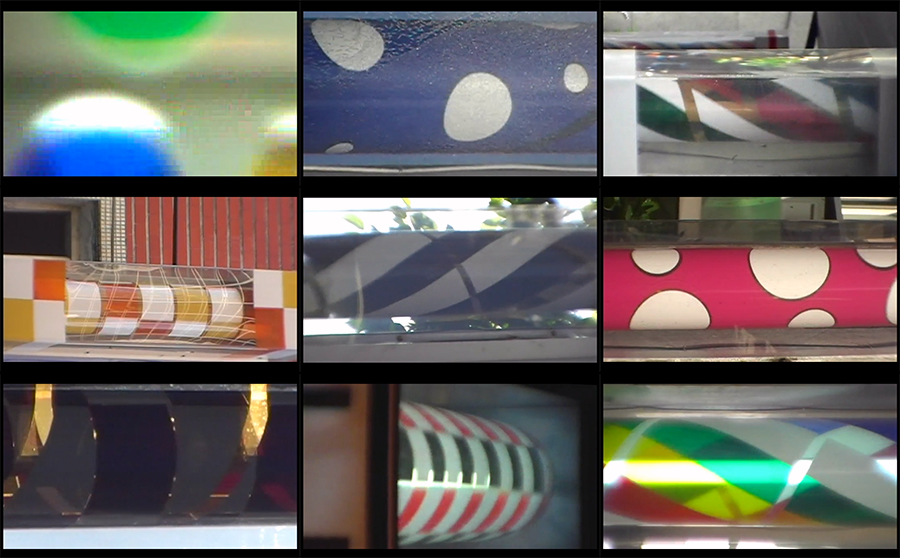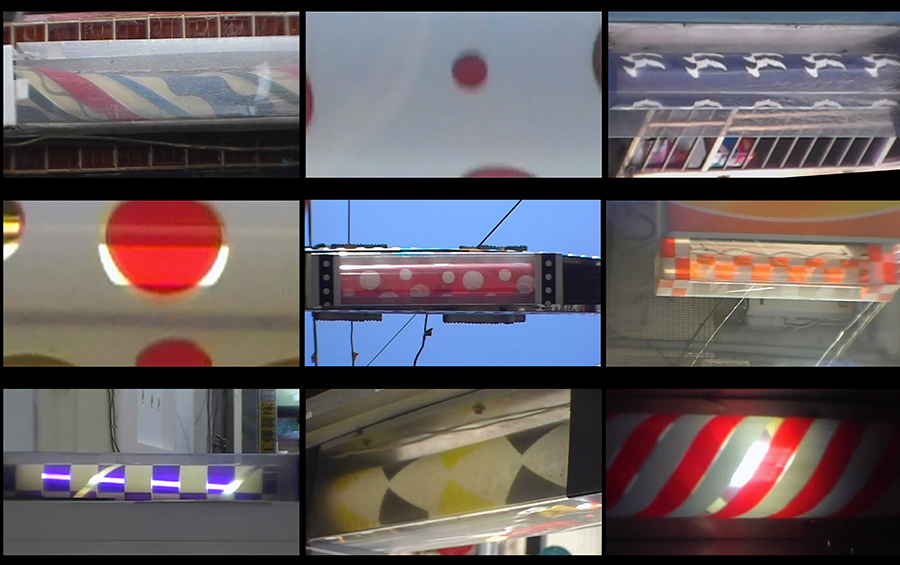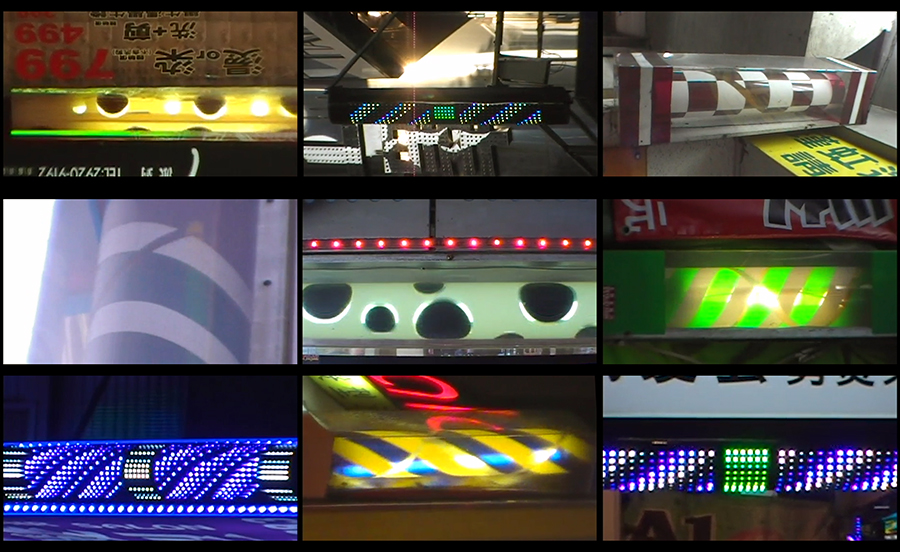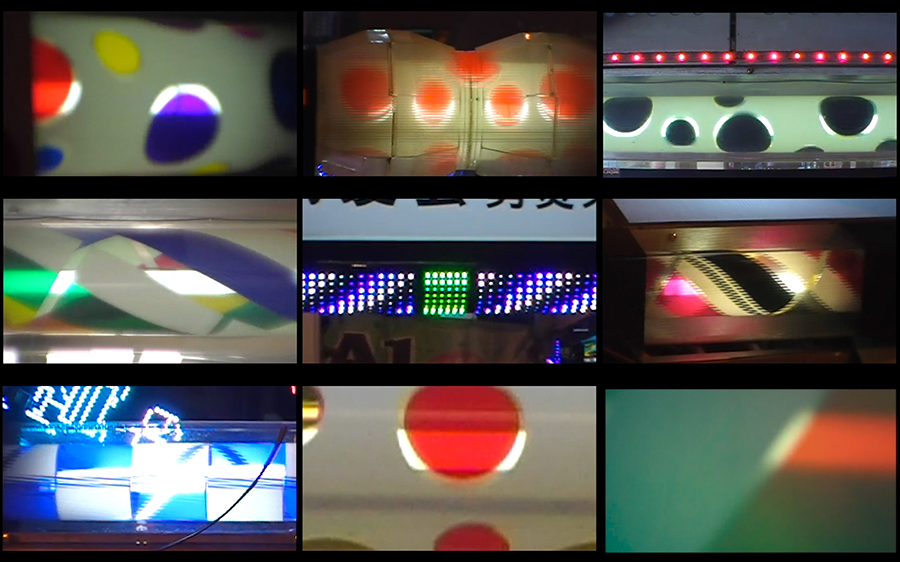Aesthetic Jam - 9th Taipei Biennial

Aesthetic Jam is a project curated by Hongjohn Lin and Henk Slager in close consultation with Nicolas Bourriaud, curator of the 2014 edition of the Taipei Biennial.
Aesthetic Jam intends to explore topical potentialities of an alternative and more strategic manner of dealing with artistic practices. Therefore, the project deliberately refers back to the concept of aesthetics. Since contemporary thinkers such as Badiou and Ranciere have initiated to redefine the aesthetic regime, aesthetics seems to point again to extra-territorial frameworks able to avoid the production of instrumentalizing concepts. Indeed, a topical understanding of aesthetics appears to be astoundingly compatible with what was once advocated by artistic research, i.e. the self-reflexive and self-critical capacities of artists engaging in configurations of understanding and signification.
More about Aesthetic Jam project here
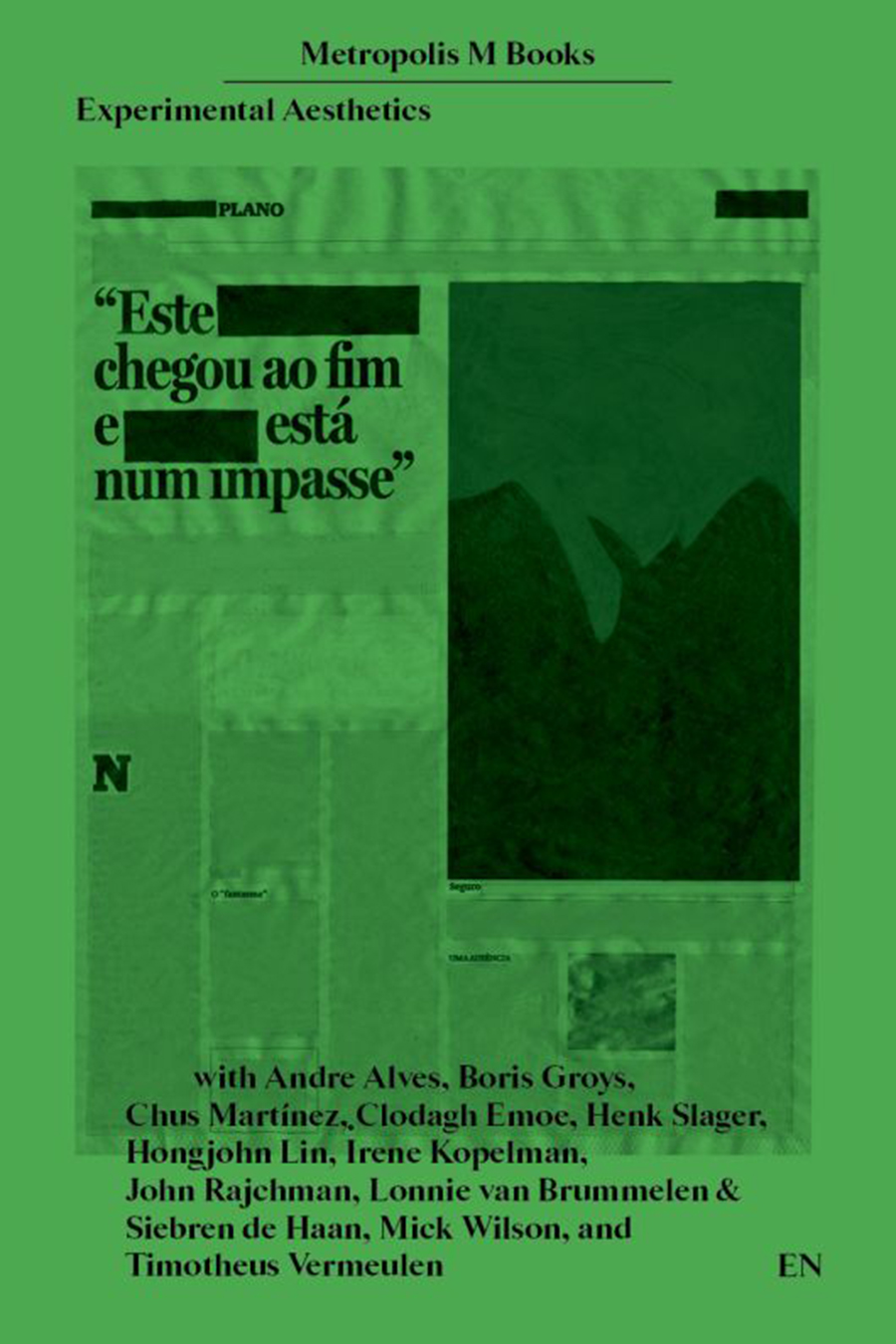
My answer to this proposition should be perceived as a situational attempt to position how my artistic approach speaks to a wider context, reflecting on certain aspects of the social and everyday conditions. I answered the provocation of “contemporary aesthetics” with a reflection on hesitation and stalemates as dominant contemporary aesthetic forms.
The first contribution to this project was the text “Aesthetics of the impasse” to be part of the book "Experimental Aesthetics" published by Metropolis M parallel to the project. There you can find my text along with contributions by Lonnie van Brummelen & Siebren de Haan, Irene Kopelman, Hongjohn Lin, Mick Wilson, Clodagh Emoe, Boris Groys, Chus Martinez, Timotheus Vermeulen, and John Rajchman.
----
Aesthetics of the Impasse
Andre Alves - 2014
It is not a vision – it can be found in any newspaper: the contemporary everyday is held by a sensation of non-resolution and lacks prospects for other worlds. In the worst case, this is not some sort of daydream but the manifestation of having become paranoid without realizing the splits between different realities. In the best case, it is the advertisement of an articulation of reality sustained by ambiguity and impotence in the name of economic austerity, the common good, and political discipline – and with the capacity to get rid of any sense of radicalism, personal and social potency, and mental balance.
The contemporary everyday results from a set of temporary exchanges articulating contingent practices, while maintaining the social and the political essentially unstable. However, today the contemporary seems to be trapped in a play of ambiguity not performing the potential openness of the unstable, but rather leading to setting-up the instability; one that will simply not wear off. This is basically the outcome of a repetitious political lexicon as a sort of linguistic pathology following a dialectic of negativity: influence, trump, legislate, dominate, surround, crisis, austerity, discipline, future, lack, solution...
Such instability is a manifestation of the crisis in political imagination, in our creative impotency. The sensation of uncertainty gives rise to what Marina Garce?s calls the prisons of the possible: an arrest of the imagination of other others in the world, or even other worlds - at least ones that are not the world of the excluded. According to Garce?s, the very idea of reality relies on the potential for change - a contingency that allows for the actualization of that potential, the novel. But in the current contemporary she identifies a tension between that which seems to be possible and the role of uncertainty as openness: ‘the prisons of the possible... invade and monopolize our relation with the world every time we feel that ‘everything is possible... but we cannot do anything else (besides choosing)’ and that ‘everything can be said... but one has nothing relevant to add.i’
The crisis of imagination is not brought about so much by the lack of potential to produce alternatives (because everything seems to be possible, at least in the eyes of capital exchange) as by the evidence that one’s alternatives have no capacity to shift the sensed contemporary. There seems to be a hegemonic voracity regarding the present, a manifestation of the desire to normalize subjectivity by controlling the mechanisms inherent to political mobilization (from territory planning to currency control) and subjective perceptions (from interfering with personal aspirations, localization of the individual in the possibility of the present and his own future, and so on). Such a teleology without purpose struggles with the possibility of artistic endeavors, since the artistic attitude is necessarily a founding one. It dismisses that there is a decision to follow; decisions are the most fundamental aspect of the aesthetic. For the subjective experience of the individual, it is not much different.

Untitled - from the series Extractions.
Translation, from upper to lower section:
“___Plan/This___came to an end___and___is in an impasse/N/The ghost/Safe/An absence/•” Newspaper Jornal de Noticias May 26, 2014
Andre Alves 2014
If one lives under a sensation of inoperability, of ‘no alternatives left,’ then, in the world of unlimited reproduction – as Bourriaud puts it – subjects are left to live under the sign of permanent exile.ii The exile starts with the model of contemporary participation dominated by a shared currency of capital and technology. Colectivo Situacionesiii saw in this the dilemma of our present: on the one hand the profound subjective disquiet of choice, on the other, something perceived as a terrifying and constant attempt of normalization of the counter-system that excludes us (in Situaciones’ original idea, from a political governance angle). This contemporary attitude can be interpreted as an aesthetic of the impasse: a present lacking potential actuality. That is, the capacity and incapacity to use the disquiet, to profit from contingency, to imagine possibilities without being immediately subdued by the belief that they will not effect any transformation.
The word impasse has become particularly popular in contemporary politics to describe a state of apparent non-resolution, where nothing can be altered. The surprise is that the impasse is treated by media and politics as a sort of external entity; as a logic unfolding from the exterior of society, as a haunting shadow that excuses responsibility, henceforth allowing all sorts of decisions – violence, disrespect, and negation of the other.
Yet, something is in motion in the contemporary and the transformation of how the word impasse is employed signals it. The term impasse was born from Voltaire’s literary beautification of the term cul-de-sac: dead-end street. It results from the contraction of im + passer, or not to pass. The use of the term impasse in present politics pursues that original dead-end street metaphor. In our days, this (originally architectonic) terminology is more commonly known for expressing situations and subjective psychological states – accomplishing Simmel’s prognosis on the expansion of the lexicon of the metropolis as a definer for the nature of spiritiv. A shift happened under Fritz Perls, who has listed the impasse as a psychological state of neurosis. From then on, the impossibility of acting and judging connected to an impasse no longer denotes a dead-end (street). It rather designates an inward-turned energy imploding the layers of personality, where the obvious ceases to be clear through a timely process that should be perceived as a transition, as the internal event taking place in people’s minds as they go through change. The impasse is a haunting force generated by the individual to indicate an area of discomfort. It signals a lack of resolution and understating of direction.
However, despite being a jam in direction, the impasse is also carried by a sense of motion, one that the individual must go through in order to produce change. This is somewhat uncanny, since it is generated by individuals and feels to them as an external force. The understanding being enacted in political discourse is similar to this sense of external force that commands our directions. But although the term is employed in such discourses in ways meant to imprint this idea, it is worth noting too that the similarity ends there. For Perls (and Gestalt Therapy), the understanding of what one is shying away from is a necessary step for transformation - to embody, to exaggerate it, until it forces one to realize its intention. This process is also different from change, which can fall on you by force or fate or even random choice; it implicates one as accountable for the realization of a decision.
Then, here, one finds a discursive gaffe or a missed encounter, since art, psychology, media- speech and politics all express and perceive the impasse in different ways. This mismatch of ideas plays an important role in the nebulous effect of our perceptions: we use the same words but engage in different conversations. It is not only a situation of ambiguity and deep hesitation; it is one of unashamed dyslexia. Words know things; they carry a history of proven effectiveness, and the delivered use of a word mobilizes metaphors that open up specific constructions of reality. Reclaiming this discursive manipulation, and accepting that there are advantages in the existential disquiet (rather than being subdued by it) inverses the manipulation of language but also evokes a release from a dialectics of paranoia and consolation.
It might sound like a cliche?, but artists do know how to put the disquiet into play and turn it into something potential. It is not about being haunted by dread and find catharsis and consolation in making art – that would be the same consoling criteria the political discourse acts upon; it is about making and giving shape to meanings, again and again, and again. Art practices permanently offer the puzzlement of the new by detecting, in the making of art, how individuals relate to the materiality of their time, that is, how they exist in it. This puts aesthetic judgment at work and creates continuity in the development of artistic discourses. In the aesthetic disquiet, everything must be reorganized; thinking, then, undergoes a digressive experience, which is not necessarily a disintegrative one. What is being sold in political discourse as infectious has always been taken in art as a cure.
Because the aesthetic force is meant for the imaginary other, it is from the start an aperture in the intentions of ‘the prisons of the possible.’ The role of art in the era of the impasse might start by reclaiming the impassive-unrest that floods the contemporary (as once one recognized the need to reclaim the means of labor), to disintegrate the configurations that force the contemporary into a cliche? – including its own. The potential is there; if aesthetics has something to teach our contemporary politics it is how to regain its creative imagination – and that will depend on art’s pedagogical capacity.
Notes
iMarina Garce?s (2002) ‘En las Prisiones de lo Posible.’ Barcelona: Edicions Bellaterra, p.15, my translation.
iiAccording to Bourriaud, N. (2009): ‘The Radicant.’ NY: Lukas & Sternberg, p. 42.
iii According to Colectivo Situaciones (2009) ‘Disquiet in the impasse’.
iv Georg Simmel ‘The metropolis and the mental life.’ E-source: http://www.blackwellpublishing.com/content/bpl_images/content_store/sample_chapter/0631225 137/bridge.pdf
--------
Project AESTHETIC JAM
A turning that keeps going
Produced in the context of Aesthetic Jam, taking as departing point the notion of "Experimental Aesthetics" A turning that keeps going combines a spatial recognition of Taipei and an approach to experimental aesthetics as a perpetual negotiation and adaptation between display and interaction, how emergent arguments and strategies are in a perpetual motion where ideas and forms connect, disconnect, gain meaning and lose meaning. I decided to take the idea of motion quite literally by looking at the transformational relations with objects in our everyday landscape (and specifically to Taipei) to the spread of Barber Poles (used to identify both barber shops and hair saloons, and sometimes brothels).
The presence in Taipei of the Barber Pole might be seen as a double dislocation. The first, from Euro-American context (perhaps coming in vogue through Japanese colonization, and in such sense, remaining as a postcolonial device). The second, the autonomy of the contemporary esthetic element from its original symbolic history (the pole as 16th century distinction of two professional categories from the Barber-Surgeon’s Company guild: the surgeon (red and white pole) and the barber (blue and white pole).
The pole stands as just another visual element in the noisy visual landscape of advertisements; a colorful shimmering light effect; a dislocation that would talk to the always transitional quality of such devices.
A turning that keeps going
Video DV-NTSC, Color
9’26’’
link: A turning that keeps going




